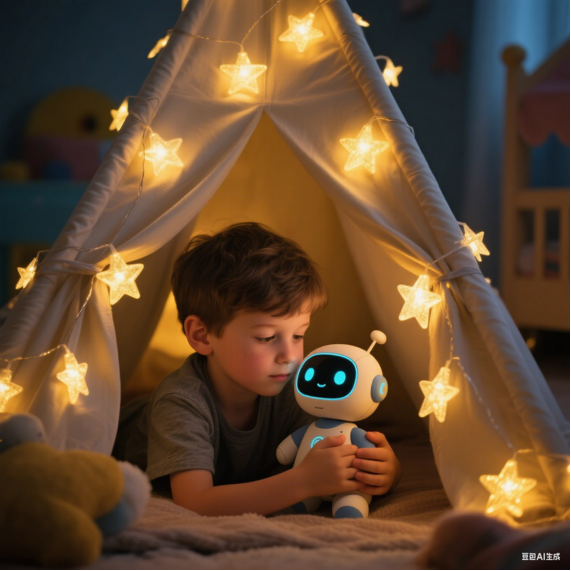AI Plush Toys: Boost Early Learning
Discover how AI plush toys are revolutionizing early education. These innovative learning toys engage children, enhancing their cognitive skills while providing fun and interactive experiences. Explore the benefits of AI toys for educational platforms today!
10/22/20255 min read


Introduction to AI Plush Toys in Education
The advent of technology has redefined various sectors, and education is no exception. Among the innovative tools emerging in this realm are AI plush toys, which are becoming increasingly prevalent in educational platforms. These toys are not merely stuffed animals; they are equipped with artificial intelligence capabilities that enable them to interact with children in meaningful ways. Through speech recognition, sensors, and programmed responses, AI plush toys can engage users in dialogues, respond to questions, and even personalize learning experiences based on individual interactions. This capacity for engagement is a fundamental aspect that sets them apart from traditional toys.
AI plush toys are designed with features that promote early learning by nurturing cognitive and emotional development. They encourage children to explore their curiosities while providing immediate feedback and reinforcement, thus fostering a more interactive learning environment. Unlike conventional toys that often serve as passive entertainment, AI plush toys actively participate in a child's educational journey, making learning more enjoyable and effective. This interactivity not only captivates children's attention but also supports skill development in areas such as language, social skills, and problem-solving.
The integration of technology within early learning settings is increasingly recognized as vital for preparing young learners for the complexities of the modern world. As children engage with AI plush toys, they are gradually exposed to concepts of artificial intelligence, coding, and digital interaction, which are essential in today's digital economy. Consequently, these toys serve as introductory tools that bridge play and essential learning, paving the way for a deeper understanding of technology. This growing trend highlights the importance of embracing innovative solutions that can enhance traditional educational methodologies, offering new avenues for effective teaching and engagement in early childhood education.
The Benefits of AI Plush Toys for Young Learners
AI plush toys are becoming increasingly popular in educational settings for their ability to support the learning journey of young children. One of the key benefits of these innovative toys is their ability to foster language development. By engaging in interactive conversations, AI plush toys encourage children to express themselves verbally, thus expanding their vocabulary and enhancing their communication skills. Research has shown that interaction with conversational agents can significantly improve children's linguistic capabilities, making AI plush toys a valuable tool in the early learning environment.
In addition to language development, AI plush toys play a pivotal role in enhancing cognitive skills. These toys often come equipped with prompts and challenges that require children to think critically and solve problems. Activities designed to stimulate curiosity and creativity not only captivate young minds but also help develop essential cognitive abilities such as memory, attention, and reasoning. For example, an AI plush toy that asks questions or introduces puzzles can inspire children to think independently and develop their reasoning skills in a fun and engaging manner.
Moreover, AI plush toys contribute to promoting emotional intelligence through their interactive nature. Children can form attachments to these toys, leading to improved social skills as they engage in role-playing scenarios or learn to express empathy through their interactions. Studies indicate that children who regularly engage with emotionally responsive toys are better equipped to identify and manage their feelings, as well as understand the emotions of others—key components of emotional intelligence.
A significant advantage of AI plush toys is their ability to adapt to individual learning paces. Tailoring experiences to fit each child’s unique needs ensures that learning is both personalized and effective. With their ability to observe and respond to user interactions, these toys can modify their responses or challenges based on a child's progress, allowing for a customized learning experience that nurtures skill development in a supportive manner.
Real-Life Examples and Success Stories
The incorporation of AI plush toys into educational platforms has gained traction, with numerous success stories illustrating their effectiveness in improving early learning outcomes. One notable initiative is the collaboration between a prominent educational toy manufacturer and an early childhood education center, which introduced AI-enhanced plush toys into their curriculum. Teachers reported a significant increase in student engagement. The toys were utilized to facilitate storytelling and interactive play, sparking children's interest in learning through imaginative interaction.
Another successful case is an online learning platform that integrated AI plush toys into their remote education programs. Parents shared testimonials highlighting the positive impact these toys had on their children’s motivation. The plush toys served as companions during lessons, providing encouragement and emotional support, which in turn elevated the learning experience. Parents noted that their children showed improved retention of information, effectively recalling facts and concepts introduced during activities with the AI toys.
In a primary school setting, educators decided to pilot a program incorporating AI plush toys designed to teach emotional intelligence and social skills. Feedback from teachers revealed that children were more willing to open up about their feelings and interact with peers positively. Teachers observed marked enhancements in communication skills and empathy among students when using the AI plush toys to role-play various scenarios.
Additionally, in a case study conducted by a recognized educational technology organization, data collected over a semester showcased an increase in overall academic performance in subjects where AI plush toys were utilized. Children expressed a greater desire to participate in cooperative learning activities, leading to not only improved subject matter understanding but also fostering a sense of community in the classroom.
Future Trends and Considerations in Educational Technology
The landscape of educational technology is rapidly evolving, particularly with the emergence of AI plush toys designed to enhance early learning experiences. As advancements in artificial intelligence and robotics continue to progress, we can expect significant improvements in the capabilities of these innovative educational tools. Future iterations of AI plush toys may incorporate more advanced natural language processing, enabling them to engage learners in conversations that adapt to individual learning styles. Furthermore, personalization potential may allow them to curate educational content tailored to a child's interests, thereby fostering a more engaging learning environment.
However, as we embrace these technological advancements, it is paramount to consider the implications associated with increased reliance on digital learning aids. One notable concern is screen time; as AI plush toys may be integrated with supplementary digital interfaces, striking a balance between traditional learning and technology will be essential. Educators and caregivers must work collaboratively to ensure that children's screen exposure is moderated and that these educational tools serve to complement, rather than replace, foundational learning methodologies.
Privacy concerns also arise with the use of AI and robotics in educational settings. As these plush toys collect data to enhance user experience, it is crucial for stakeholders, including manufacturers, educators, and parents, to establish rigorous guidelines protecting children's personal information. Building trust through transparency in how data is utilized will be essential in maintaining confidence in such educational technologies.
Looking ahead, the role of AI in early childhood education is poised to expand, with predictions indicating that such innovations could enrich the educational landscape. As we witness ongoing developments in the field, it becomes increasingly important to assess how these technologies can be best integrated into learning environments, ultimately supporting holistic educational experiences for the youngest learners.
